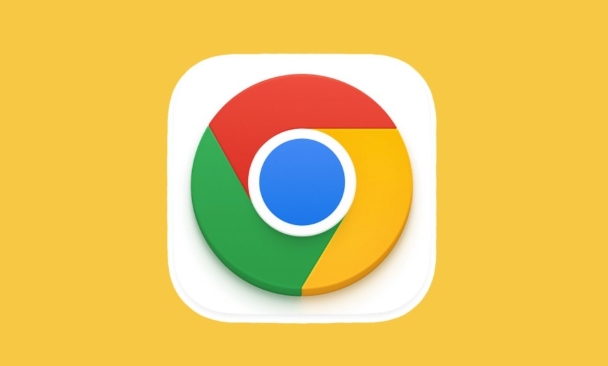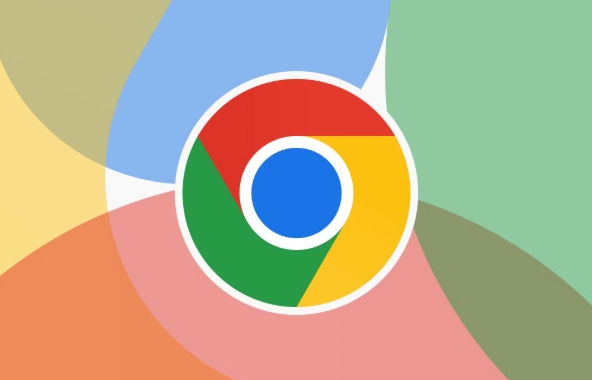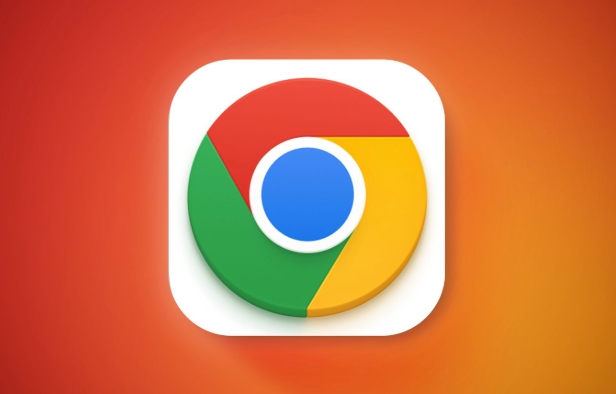Google Chrome password manager is not saving passwords
Ensure Chrome’s “Offer to save passwords” is enabled in Settings > Autofill and passwords > Password Manager. 2. Sign in to your Google account and turn on Sync with Passwords included under Sync and Google services. 3. Disable conflicting extensions like third-party password managers or ad blockers at chrome://extensions/ and test after restarting Chrome. 4. Clear corrupted data by removing sites set to “Never save” in Password Manager settings or clear browsing data including cookies. 5. As a last resort, reset Chrome to default settings via Settings > Reset settings, which restores default configurations without deleting synced passwords or bookmarks. The issue is typically resolved by adjusting settings, enabling sync, or disabling interfering extensions, and testing on standard sites like Gmail can help confirm if the problem persists.

If Google Chrome’s password manager isn’t saving passwords, it can be frustrating—especially if you rely on it for convenience and security. The issue usually stems from settings, extensions, or browser state. Here’s how to troubleshoot and fix it.

✅ 1. Check if Chrome is Allowed to Save Passwords
Chrome has built-in settings that control whether passwords are saved.
Steps:

- Open Chrome and click the three dots in the top-right corner.
- Go to Settings > Autofill and passwords > Password Manager.
- Make sure Offer to save passwords is turned on.
- Also check that Auto sign-in is enabled if you want automatic login.
⚠️ Note: If you're in Incognito mode, Chrome won’t save passwords by default.
✅ 2. Ensure You're Signed In to Chrome (Sync Enabled)
If you're not signed into your Google account, or sync is off, passwords may not save properly across devices—or sometimes at all.

What to do:
- Click the profile icon in the top-right of Chrome.
- Make sure you’re signed in.
- Go to Settings > You and Google > Sync and Google services.
- Turn on Sync and ensure Passwords is included in the synced data.
? Tip: Sync helps save and restore passwords across devices. If it’s off, changes may not persist.
✅ 3. Disable Conflicting Extensions
Some browser extensions—especially password managers like LastPass, 1Password, or ad blockers—can interfere with Chrome’s built-in password saving.
Try this:
- Go to chrome://extensions/
- Temporarily disable all extensions (especially third-party password managers).
- Restart Chrome and try logging into a site again.
- See if Chrome now prompts to save the password.
If it works, re-enable extensions one by one to find the culprit.
✅ 4. Clear Corrupted Password Settings or Data
Sometimes saved settings or corrupted autofill data prevent new passwords from being stored.
Fix:
- Go to Settings > Autofill and passwords > Password Manager.
- Click Settings (next to "Password Manager").
- Under Addresses and more, click Manage passwords.
- Look for any site where Chrome is set to Never save and remove it from the list.
- You can also try turning password saving off and back on.
Alternatively:
- Go to chrome://settings/clearBrowserData
- Clear cookies and site data (be cautious—this logs you out of sites).
- Try logging in again and see if Chrome offers to save the password.
✅ 5. Reset Chrome Settings (Last Resort)
If nothing works, reset Chrome to default settings. This won’t delete bookmarks or saved passwords (if synced), but it clears settings that might be causing conflicts.
How:
- Go to Settings > Reset settings > Restore settings to their original defaults.
- Confirm the reset.
- Restart Chrome and test password saving again.
Final Notes
- Chrome may not prompt to save passwords if:
- The website uses unusual login forms (e.g., custom JavaScript logins).
- You’ve previously clicked “Never” when asked to save a password.
- The form lacks proper
nameoridattributes on input fields.
? Try testing on a common site like Gmail or Twitter to confirm if the issue is site-specific.
Basically, most password-saving issues in Chrome come down to settings, sync, or extension conflicts. Go through the steps above one by one—it’s usually a quick fix.
The above is the detailed content of Google Chrome password manager is not saving passwords. For more information, please follow other related articles on the PHP Chinese website!

Hot AI Tools

Undress AI Tool
Undress images for free

Undresser.AI Undress
AI-powered app for creating realistic nude photos

AI Clothes Remover
Online AI tool for removing clothes from photos.

Clothoff.io
AI clothes remover

Video Face Swap
Swap faces in any video effortlessly with our completely free AI face swap tool!

Hot Article

Hot Tools

Notepad++7.3.1
Easy-to-use and free code editor

SublimeText3 Chinese version
Chinese version, very easy to use

Zend Studio 13.0.1
Powerful PHP integrated development environment

Dreamweaver CS6
Visual web development tools

SublimeText3 Mac version
God-level code editing software (SublimeText3)
 How to fix the black screen issue in Google Chrome?
Aug 06, 2025 pm 12:22 PM
How to fix the black screen issue in Google Chrome?
Aug 06, 2025 pm 12:22 PM
DisablehardwareaccelerationbygoingtoChromeSettings→Systemandtogglingoff"Usehardwareaccelerationwhenavailable",thenrelaunchChrome.2.UpdategraphicsdriversviaDeviceManageronWindowsorSystemSettingsonmacOS,ordownloadthelatestversionfromthemanufa
 Google Chrome password manager is not saving passwords
Aug 02, 2025 pm 01:47 PM
Google Chrome password manager is not saving passwords
Aug 02, 2025 pm 01:47 PM
EnsureChrome’s“Offertosavepasswords”isenabledinSettings>Autofillandpasswords>PasswordManager.2.SignintoyourGoogleaccountandturnonSyncwithPasswordsincludedunderSyncandGoogleservices.3.Disableconflictingextensionslikethird-partypasswordmanagersor
 What is the 'Aw, Snap!' error in Chrome
Aug 04, 2025 am 01:21 AM
What is the 'Aw, Snap!' error in Chrome
Aug 04, 2025 am 01:21 AM
"Aw,Snap!" error is usually caused by website problems, browser extension interference, outdated Chrome version or insufficient system resources. It can be solved through the following steps: 1. Check whether it is a problem with the website itself, try to refresh the page, use other browsers, or wait for a while; 2. Exclude extensions or set interferences, use traceless mode to test and troubleshoot expansions one by one; 3. Update Chrome version and clear cached data; 4. Turn off hardware acceleration and check system resource usage. Trying one by one in sequence usually solves the problem.
 What is the 'utility process' in Chrome's task manager
Aug 05, 2025 am 07:43 AM
What is the 'utility process' in Chrome's task manager
Aug 05, 2025 am 07:43 AM
Chrome's utility processes are responsible for handling system-level tasks that are not related to web pages or extensions, such as managing downloads, handling clipboard access, running network stacks, etc. 1. It isolates different types of practical tasks to improve security and performance, such as handling network, GPU and audio related tasks separately. 2. It is normal for multiple utility processes to run at the same time. Each process works independently to prevent one problem from causing overall crash. 3. If a utility process occupies too much resources, it may be caused by temporary operations, such as downloading large files. If it continues to be high, you can try restarting the browser, checking for extensions, or updating Chrome.
 Why is Google Chrome autofill not working correctly?
Aug 02, 2025 pm 01:03 PM
Why is Google Chrome autofill not working correctly?
Aug 02, 2025 pm 01:03 PM
CheckifautofillsettingsareenabledandcorrectlyconfiguredunderChromeSettings>Autofill,ensuringaddresses,paymentmethods,andpasswordsareturnedonwithaccurateinformation.2.Verifysitecompatibilitybytestingautofillonstandardforms,asnon-standardorJavaScrip
 Google Chrome is not connecting to the internet but other browsers are
Aug 03, 2025 am 06:19 AM
Google Chrome is not connecting to the internet but other browsers are
Aug 03, 2025 am 06:19 AM
First,checkChrome’sproxysettingsanddisableanymanualproxyorsetupscriptifnotneeded;second,disableextensionsonebyoneortestinIncognitoModetoidentifyproblematicadd-ons;third,clearChrome’snetworksettingsbyflushingsocketpoolsandclearingDNScacheviachrome://n
 How to fix 'ERR_INSECURE_RESPONSE' in Google Chrome?
Aug 04, 2025 am 11:13 AM
How to fix 'ERR_INSECURE_RESPONSE' in Google Chrome?
Aug 04, 2025 am 11:13 AM
First,checkthewebsite’sSSLcertificateinChromeDevTools;ifit'sexpiredormismatched,theissueiswiththesiteowner.2.ClearChrome’sSSLstateandbrowsingdatatoremovecorruptedcache.3.Disableantivirus,firewall,orproxythatmayinterceptSSLconnections.4.ResetChromeset
 Why have my Google Chrome bookmarks disappeared?
Aug 02, 2025 am 06:43 AM
Why have my Google Chrome bookmarks disappeared?
Aug 02, 2025 am 06:43 AM
CheckyourGoogleAccountsyncsettingstoensureyou'resignedintothecorrectaccountandthatbookmarksareenabledinsync;togglesyncoffandonifneeded.2.VerifythebookmarksbarisvisiblebypressingCtrl Shift BandchecktheBookmarkManagerformisplacedbookmarks.3.Restorefrom







